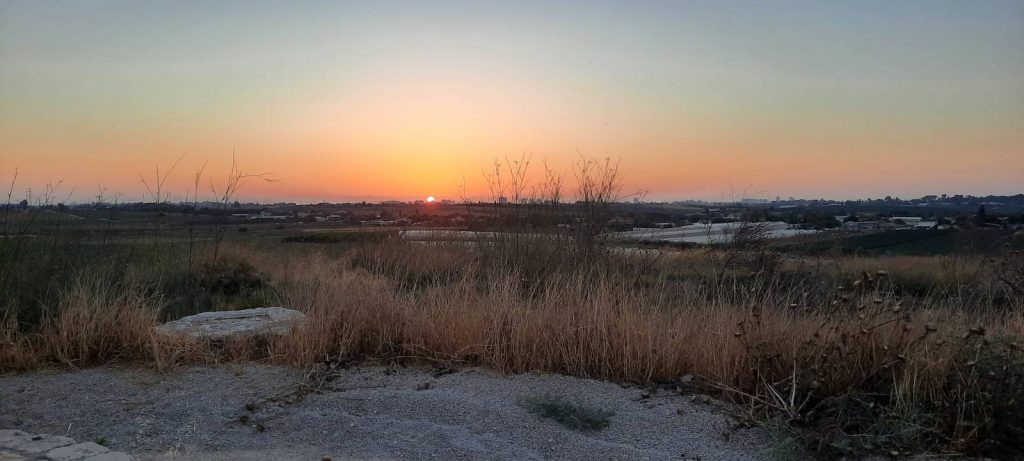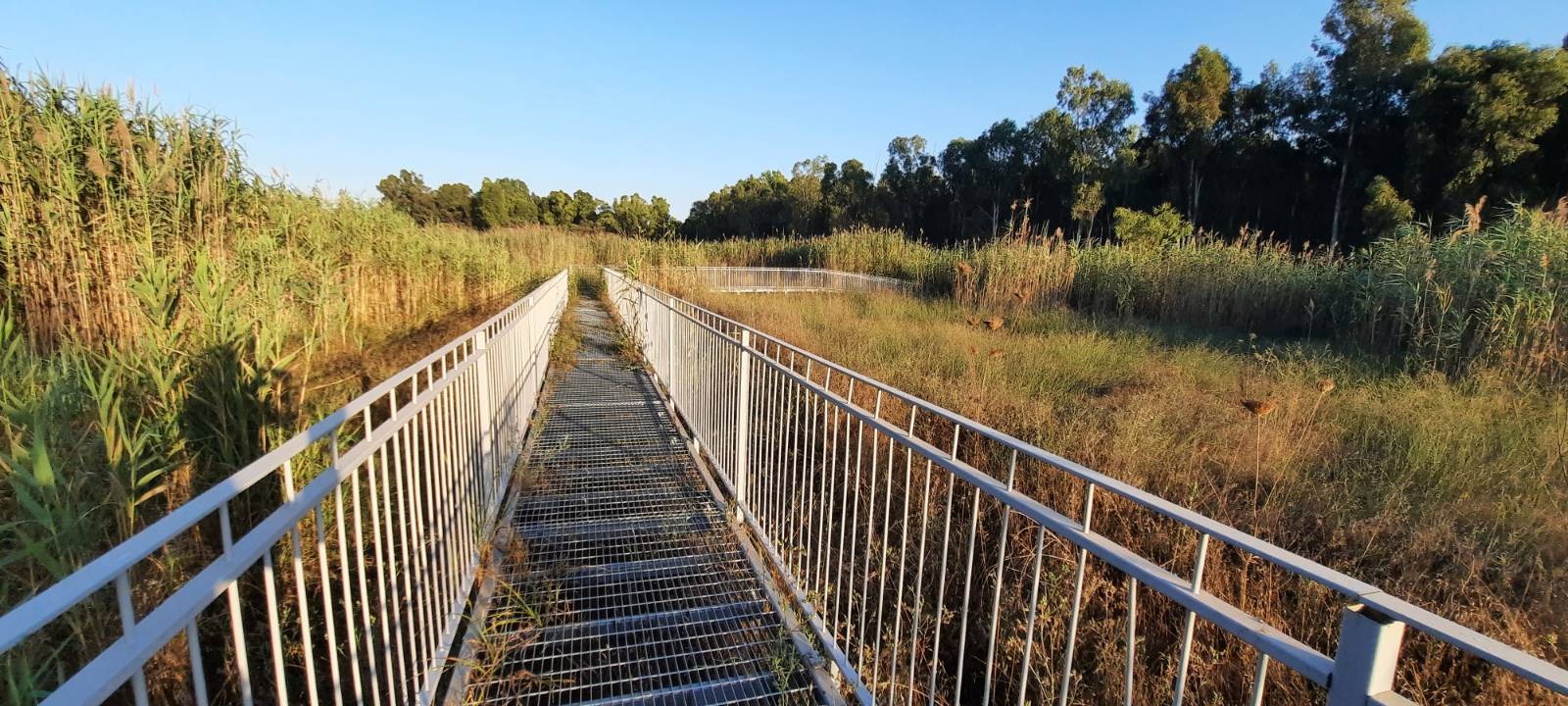Route type: Circular
Difficulty level: Easy
Distance: ~2 km
Waze to start/end point: Yatsits cemetery
Notes:
- Good for dogs
- Trail is not marked
I heard about this walk – we won’t call it a hike – from an unlikely source…my neighbor. I filed the description of the walk away, to be investigated when I had the time. What intrigued me about his description was that it was about a 20 minute drive from where I live and a natural spring was involved somehow. While the summer days are long, this could even be investigated mid-week one evening after work. What a concept!
I did not include a map link for this one because, really, it would just confuse you. There are no trail markings and were you to try to follow the map app, like I did, you would find that the map (in this case) is inaccurate. But there are enough natural landmarks to follow.
Park your car at the cemetery and you will see a tunnel that goes under the train tracks.
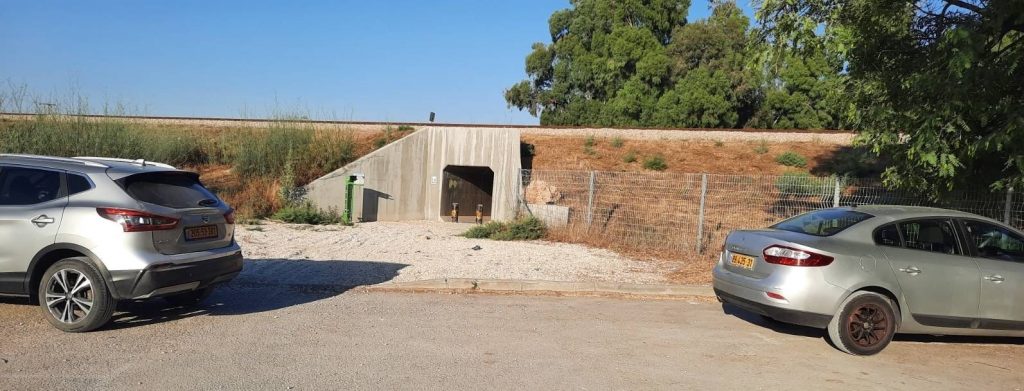
As soon as you come out the other side of this tunnel make an immediate right turn.
Just a very short way further along the path splits – stay to the left.
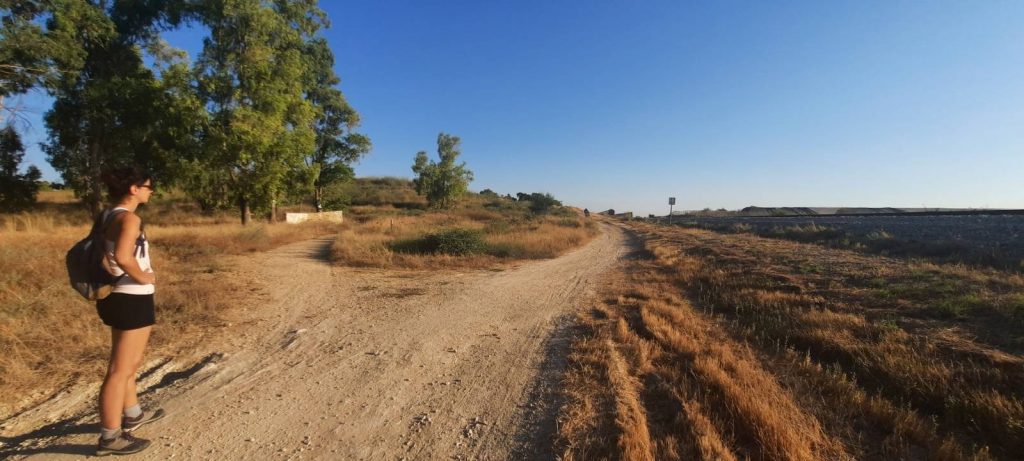
There is a short, easy ascent to the top of the tel – Tel Malut – with wonderful 360 degree views all around – over Mazkeret Batya and Rehovot, the surrounding agricultural land and Gibton spring/pond. And….oh look!….a train.
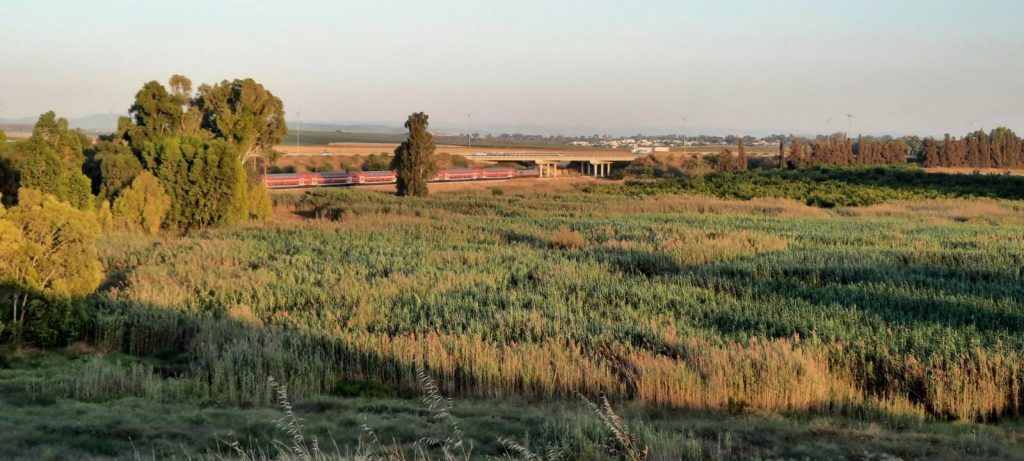
Ancient Gibton is a significant site in Israelite history. According to the Bible here, twice, a military coup took place against the king of Israel. Gibton is identified as Tel Malut, near the modern town of Mazkeret Batya. Surprisingly, despite the significance of the site, it has not been excavated.
Gibton is mentioned only three times in the Bible. I Kings 15 Describes Nadav, king of Israel, fighting over Gibton, which was held by the Philistines at the time. During the siege “Baasha son of Ahijah from the tribe of Issachar plotted against him, and he struck him down at Gibbethon, a Philistine town, while Nadab and all Israel were besieging it. Baasha killed Nadab in the third year of Asa king of Judah and succeeded him as king.”
Two years later Basha was killed, in Tirzah, by one of his generals. At that time Omri, another Israelite military commander, was again besieging Gibton. Hearing of the death of Basha, his army crowned Omri as king. Four years later, Omri defeated his opponent, and established the new capital of Samaria (1 Kings 16).
Gibton remained a Philistine city until 712 BCE when it was conquered and destroyed by Sargon. Later, even its location was forgotten. By the 4th century CE the geographer Eusebius wondered about its location. Its name implies it was on a hill.
On the top of the tel, there is a lovely place to sit on a low stone wall which surrounds a few olive trees – a memorial to a solider from the area who fell in the line of duty in 2006.
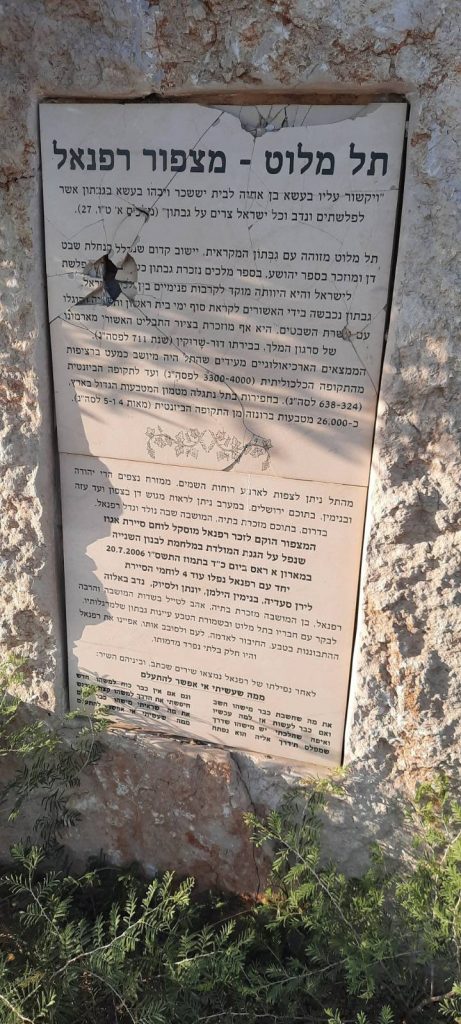
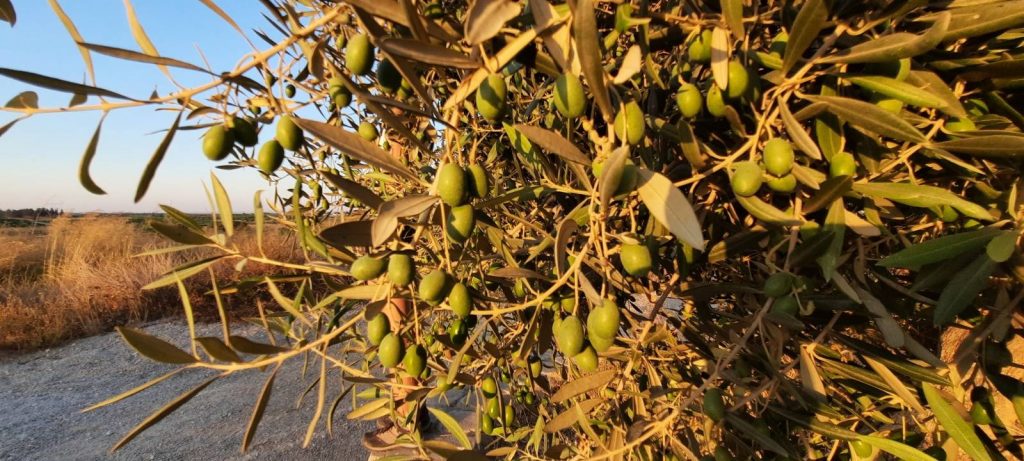
Now comes the part that is a bit confusing. Go down the path on the other side of the tel. Right at the bottom you should make a left and almost immediate right. Gibton Spring and the land around is a nature reserve and is fenced. But very soon this path splits and right about now you should be looking for a break in the fence on your left with a few planks laid over a small trickle of water.
As soon as you cross this you will see on your right this long, metal bridge. Hop on up and follow it.
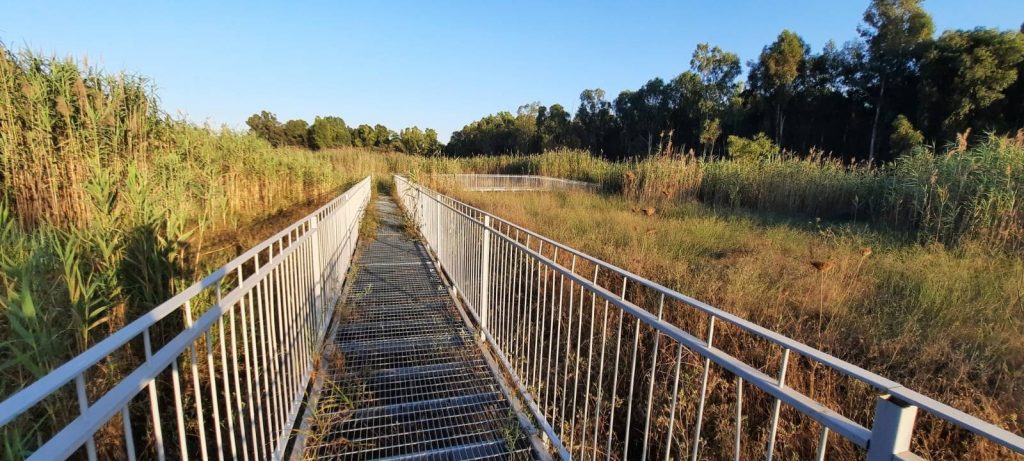
Parts of the bridge are very overgrown but passable. Push through these parts. When you reach the end of the bridge, there is no clear path from there that shows how to proceed. Straight ahead we could see what looked like a guard rail. We headed towards this, hopped over it and turned right.
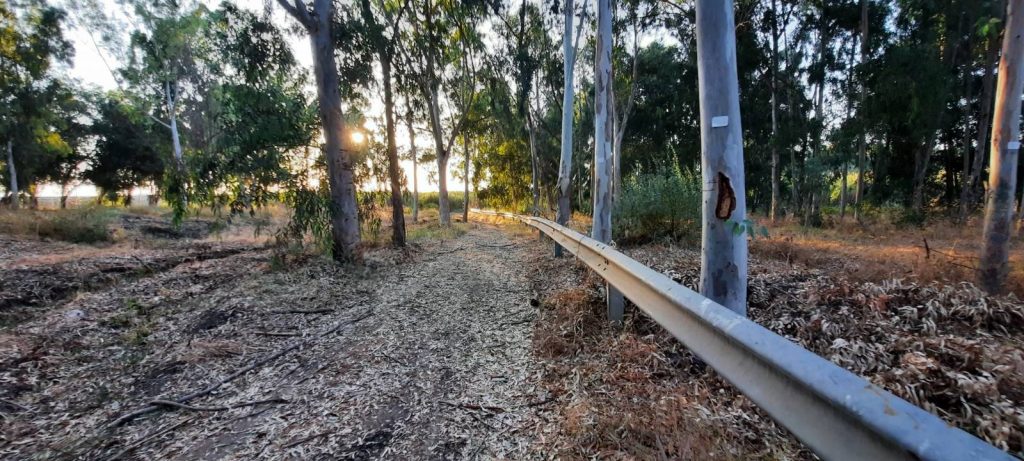
Following the guard rail brought us to a magnificent grove of eucalyptus trees, planted in tidy, even rows. Someone had even made a swing which was hanging from one of the trees.
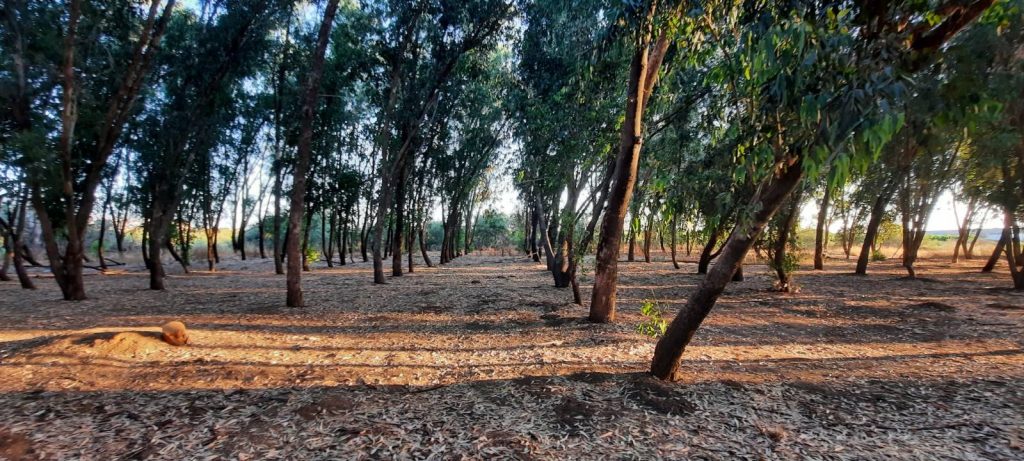
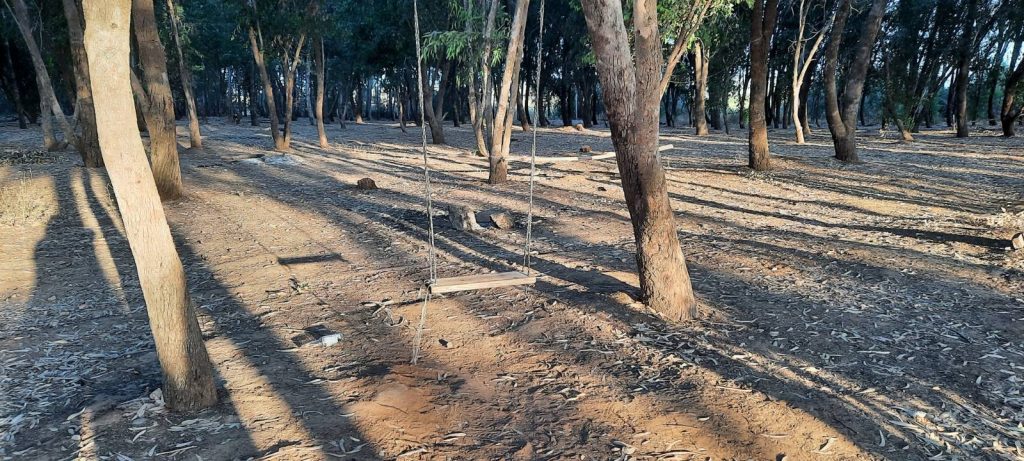
If it weren’t for the proximity to the train tracks, I would say this location would be just heavenly to camp in. I felt like I was in a cathedral of trees.
After meeting the path alongside the train tracks, we turned back in the direction we’d come and the car.
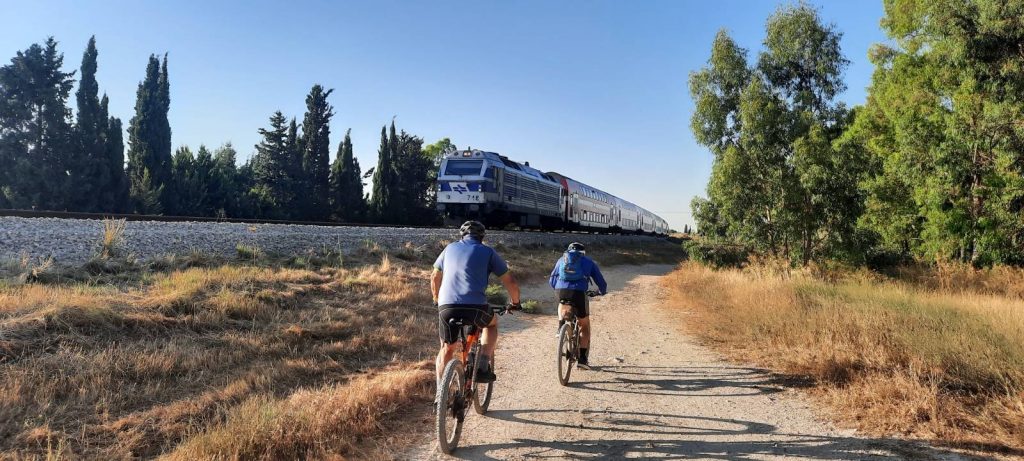
We climbed up to the top of the tel again and watched the sun set. A perfect spot for meditation and reflection.
